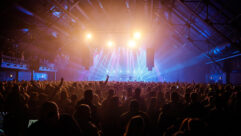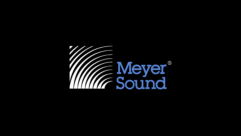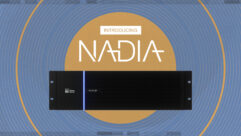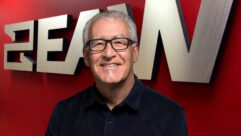
Texas A&M Kyle Field Installs Meyer Sound
Feb 21, 2007 12:49 PM

Behind a black mesh screen high atop the 11-story video scoreboard at Texas A&M‘s Kyle Field in College Station sit two tiers of eight parabolic dishes each. At first glance, this may look like a broadcast microwave array, but in reality, this “dishware” is a complement of Meyer Sound SB-1 parabolic long-throw sound beams, part of the largest and most powerful Meyer Sound system ever installed in a sports facility. When fired up on game day, the 54 loudspeakers in the system carry announcements and the music-punctuated soundtracks for the videos shown on “12th Man TV” (as the huge Mitsubishi video screen is known) to the far reaches of the stadium with astounding clarity.
“It’s really mind-blowing how well this new system works,” says Aaron Creasy, chief engineer for 12th Man Productions, the Texas A&M athletics department television network which generates content for and operates 12th Man TV. “I’ve walked all the decks, up to the cheap seats, and even in the back rows the sound reproduction is phenomenal. Voice intelligibility is exceptionally high, and when we play music tracks the sound is clean and full down into the mid-bass.”
Kyle Field is not an easy place in which to deliver sound. Its permanent seating capacity of 82,600 is the largest of any football stadium—collegiate or pro—in Texas. (It also claims to be, when packed with ardent Aggie fans, the loudest anywhere.) Compounding the task is the size and scale of “The Zone,” the latest and largest expansion section. Sprawling opposite the scoreboard, it places nearly a quarter of the stadium’s seats at distances between 500ft. and 725ft. away from the point-source audio system. In addition, the system has to cover all but the deepest under-balcony seats of the three-tier seating sections along both sidelines, with all seats receiving robust levels to appropriately complement the towering, nearly 4,000-square-foot screen.
Scaling audio to match the video was an integrated task from the start, as design of both systems was assigned to the Dallas consulting firm of Wrightson, Johnson, Haddon and Williams (WJHW). Based on their previous experience using the SB-1 at Ohio Stadium in Columbus, Ohio, and Raymond James Stadium in Tampa, Fla., WJHW Managing Principal Chris Williams and Senior Associate Gary White were confident they would take care of the far-flung seats of “The Zone.” What was different this time around was their choice of MILO high power curvilinear array loudspeakers for coverage of the side seating areas.
The Kyle Field system comprises twin left and right arrays of 10 MILO cabinets each, augmented by a center array of eight MILO 60 high-power narrow coverage curvilinear array loudspeakers. Sidefill is provided by four SB-2 parabolic wide-range sound beams, with downfill for seats directly in front handled by four UPJ-1P compact VariO loudspeakers. A Galileo loudspeaker management system takes care of all system drive processing.
Pro Media/UltraSound (PMUS) of Hercules, Calif., supplied and installed all the Meyer Sound systems. PMUS’s Demetrius Palavos managed the project, with David Bowers contributing to the rigging and final tuning. The installation was Palavos’ first exposure to the capabilities of the sound beams, and he admits he was somewhat taken aback by the experience. “David and I were sitting in the upper deck, listening to CD tracks, and we were saying to each other, ‘Yeah, this sounds great, it’s very intelligible, very smooth and pleasant to listen to.’ Then you look up and realize you’re listening to something that’s 725ft. away, which is pretty amazing,” Palavos says.
Williams confides a similar reaction to first hearing the system. “I don’t know exactly how to describe it in audio terms,” he says, “but compared to what they had before, it’s the difference between the Stone Age and the space age. I think everyone involved is remarkably happy with the coverage. In the past, distant seats at the north end were 10dB to 12dB down, even with delay fills. Now they are getting the same level and coverage from a point source.”










